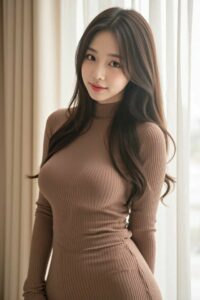Famous Models Who Redefined Beauty Standards: A Look Into Iconic Figures Who Changed the Game
Exploring the world of Famous Models Who Redefined Beauty Standards, this introduction sets the stage for a captivating journey through history and societal impact. With a focus on iconic figures who challenged traditional norms, this narrative promises to be enlightening and thought-provoking.Diving deeper into their influence on beauty standards and the evolution of the fashion industry, this discussion aims to shed light on the lasting legacy of these trailblazing models.
 Models who redefined beauty standards also played a crucial role in promoting body positivity and self-acceptance.
Models who redefined beauty standards also played a crucial role in promoting body positivity and self-acceptance.
 The influence of famous models who redefined beauty standards transcended borders and had a significant impact on global beauty ideals.
The influence of famous models who redefined beauty standards transcended borders and had a significant impact on global beauty ideals.
Famous Models Who Redefined Beauty Standards
In the world of fashion, there have been iconic models who have challenged traditional beauty norms and reshaped societal perceptions of beauty. These models have broken barriers and paved the way for diversity and inclusion in the industry.Twiggy
1960sTwiggy, known for her unconventional look with short hair, thin frame, and doe eyes, revolutionized the modeling industry in the 1960s. Her androgynous appearance challenged the prevalent notion of curvy and voluptuous models as the standard of beauty.
Naomi Campbell
1980sNaomi Campbell, a prominent figure in the 1980s, broke barriers as a black supermodel in an industry dominated by white models. Her success paved the way for greater diversity in fashion and opened doors for models of different ethnic backgrounds.
Winnie Harlow
Present DayWinnie Harlow, known for her vitiligo skin condition, has redefined beauty standards in the present day. By proudly embracing her unique features, she has challenged the industry's narrow beauty ideals and championed inclusivity for individuals with diverse appearances.
Body Positivity and Representation
 Models who redefined beauty standards also played a crucial role in promoting body positivity and self-acceptance.
Models who redefined beauty standards also played a crucial role in promoting body positivity and self-acceptance.
Role of Social Media
Social media platforms like Instagram and Twitter have been instrumental in amplifying the message of inclusivity championed by these models. Through their posts, stories, and interactions with followers, these models have been able to reach a wider audience and spread the message of body positivity.Shift in Beauty Standards
The presence of these models in the media has significantly shifted beauty standards towards the acceptance of diverse body types. By challenging the conventional norms of beauty and embracing their unique features, these models have paved the way for a more inclusive and diverse representation of beauty in the fashion industry.Fashion Industry Evolution
The fashion industry has undergone a significant evolution in terms of inclusivity and representation over the years. Gone are the days when beauty standards were narrow and limited to a specific type. Thanks to the influence of famous models who redefined beauty standards, the industry has become more diverse and accepting of various body types, skin colors, and ethnicities.Increased Diversity and Representation
- Models of different sizes, shapes, and backgrounds are now being celebrated on runways and in campaigns, challenging the traditional norms of beauty.
- Designers and brands are increasingly casting a wider range of models to better reflect the diversity of their consumers.
- There is a growing emphasis on inclusivity, with initiatives like the 50 Shades of Nude campaign promoting a wider range of nude shades for lingerie and shoes.
Before and After Influence of Models
- Before the influence of these models, beauty standards were often unattainable and exclusive, leading to unrealistic expectations among people.
- After the influence of these models, there has been a shift towards celebrating individuality and uniqueness, encouraging people to embrace their natural beauty.
- The definition of beauty has expanded to encompass a broader spectrum, allowing people to see themselves represented in the media and fashion industry.
Ongoing Efforts for Diversity and Redefining Beauty Ideals
- Many fashion brands are actively promoting diversity and inclusivity by featuring models from different backgrounds in their campaigns and shows.
- Organizations like the Council of Fashion Designers of America (CFDA) have launched initiatives to support emerging designers from diverse backgrounds.
- There is a push for greater transparency and accountability in the industry to ensure that diversity and inclusivity are not just trends but long-term commitments.
Impact on Global Culture
 The influence of famous models who redefined beauty standards transcended borders and had a significant impact on global beauty ideals.
The influence of famous models who redefined beauty standards transcended borders and had a significant impact on global beauty ideals.

